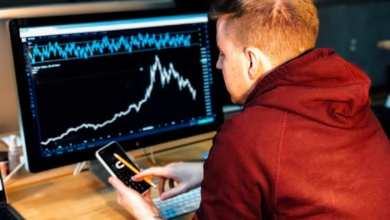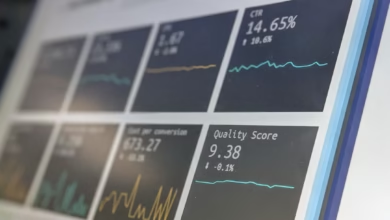Mastering CFD Trading: A Complete Guide to Speculating on Price Movements and Successful Strategies

In the ever-evolving world of online trading, Contract for Difference (CFD) trading has emerged as a popular choice for both novice and experienced traders. This innovative financial instrument allows individuals to speculate on price movements of various assets—ranging from stocks and forex to commodities and cryptocurrencies—without the need to own the underlying asset. As the popularity of CFD trading continues to grow, understanding its intricacies becomes crucial for anyone looking to navigate the complex landscape of derivatives trading.
This article delves into the fundamentals of CFD trading, providing a comprehensive guide on how to effectively speculate on market movements. We will explore key trading strategies, including day trading, swing trading, and scalping, that can enhance your potential for success in this dynamic market. Additionally, we will emphasize the importance of risk management, highlighting how to balance leverage and trading psychology to achieve optimal results. Whether you are interested in index trading, options trading, or even algorithmic trading, this article will equip you with the knowledge you need to thrive in CFD trading and beyond.
- 1. Understanding CFD Trading: A Comprehensive Guide to Speculating on Price Movements
- 2. Key Trading Strategies for Successful CFD Trading: From Day Trading to Scalping
- 3. Risk Management in CFD Trading: Balancing Leverage and Trading Psychology for Optimal Success
1. Understanding CFD Trading: A Comprehensive Guide to Speculating on Price Movements
CFD trading, or Contract for Difference trading, is a powerful financial instrument that enables traders to speculate on price movements of various assets without actually owning them. This practice has gained immense popularity across different trading markets, including stock trading, forex trading, and commodities trading, due to its flexibility and potential for profit.
At its core, CFD trading allows you to enter a contract with a broker to exchange the difference in the price of an asset from the time the contract is opened to when it is closed. This means that whether you predict the price will rise or fall, you can position yourself accordingly. For example, if you believe that a specific stock will increase in value, you can open a long position. Conversely, if you think the price will decline, you can short sell, capitalizing on the downward movement.
Understanding the mechanics of leverage and margin trading is crucial in CFD trading. Leverage enables traders to control a larger position than their initial investment, amplifying both potential gains and losses. This is particularly important for day trading and swing trading strategies, where quick price movements can lead to significant profits or losses. However, it's essential to apply risk management techniques to mitigate the inherent risks associated with leverage trading.
Market analysis plays a vital role in successful CFD trading. Traders often utilize technical analysis to identify patterns and trends in price movements, helping them make informed decisions. Fundamental analysis, on the other hand, focuses on economic indicators and news events that can impact asset prices, providing a broader context for trading strategies.
Trading psychology is another critical component of successful CFD trading. Emotional discipline and the ability to stick to a trading plan can make a significant difference in outcomes, especially in high-pressure situations typical of online trading platforms. Strategies such as copy trading and social trading allow less experienced traders to learn from seasoned professionals, while algorithmic trading and high-frequency trading leverage technology to execute trades with precision and speed.
In summary, CFD trading offers a versatile way to engage in various trading markets, including crypto trading, index trading, and energy trading, without the need for owning the underlying assets. By understanding the fundamentals of derivatives trading, implementing effective trading strategies, and maintaining a strong focus on risk management, traders can navigate the complexities of CFD trading and potentially enhance their financial outcomes.
References:
– Investopedia. (2023). CFD Trading: A Beginner's Guide. Retrieved from https://www.investopedia.com/terms/c/contractfordifference.asp
– Babypips. (2023). What Is CFD Trading? Retrieved from https://www.babypips.com/learn/forex/what-is-cfd-trading
– CMC Markets. (2023). What are CFDs? Retrieved from https://www.cmcmarkets.com/en-gb/learn/what-are-cfds
2. Key Trading Strategies for Successful CFD Trading: From Day Trading to Scalping
When it comes to CFD trading, adopting the right trading strategies is crucial for maximizing profits and minimizing risks. Here are some key strategies that traders commonly use, ranging from day trading to scalping:
1. **Day Trading**: This strategy involves opening and closing positions within the same trading day. Day traders capitalize on small price fluctuations in various markets, including stock trading, forex trading, and crypto trading. By leveraging real-time market analysis and technical analysis tools, day traders can make quick decisions and take advantage of opportunities as they arise.
2. **Swing Trading**: Unlike day trading, swing trading focuses on holding positions for several days to weeks, aiming to profit from short to medium-term price movements. Traders use both technical and fundamental analysis to identify potential entry and exit points, making it a popular strategy for those involved in commodities trading and index trading. Swing trading allows for a more relaxed approach compared to the fast-paced nature of day trading.
3. **Scalping**: This high-frequency trading strategy involves making numerous trades throughout the day to capture small price changes. Scalpers rely on technical analysis and market data to execute trades rapidly, often holding positions for just a few seconds or minutes. This strategy can be applied across various markets, including forex trading and futures trading, and requires a solid understanding of risk management to mitigate potential losses.
4. **Copy Trading and Social Trading**: For those new to CFD trading, copy trading and social trading platforms offer an opportunity to follow and replicate the trades of successful traders. By leveraging the expertise of experienced traders, newcomers can learn effective trading strategies while diversifying their portfolio in derivatives trading, such as options trading and CFD trading.
5. **Algorithmic and High-Frequency Trading**: Advanced traders utilize algorithmic trading to automate the trading process based on predefined criteria. High-frequency trading, a subset of algorithmic trading, involves executing a large number of orders at extremely high speeds. These strategies are particularly effective in markets like energy trading and arbitrage trading, where timing is critical.
6. **Risk Management**: Regardless of the chosen trading strategy, effective risk management is essential in CFD trading. This involves setting stop-loss orders, diversifying investments, and carefully considering leverage trading and margin trading practices to protect capital.
7. **Trading Psychology**: Successful trading also hinges on maintaining the right mindset. Traders must develop emotional discipline to stick to their strategies, manage stress, and avoid impulsive decisions. This psychological aspect is vital for all trading styles, whether it’s day trading or swing trading.
By understanding and implementing these trading strategies, traders can enhance their performance in CFD trading and navigate the complexities of the markets more effectively. Whether engaging in binary options or ETF trading, the key lies in consistent market analysis and adapting to changing market conditions.
References:
– Investopedia. (2023). Day Trading. Retrieved from [Investopedia](https://www.investopedia.com/terms/d/daytrading.asp)
– Trading Strategy Guides. (2023). The Complete Guide to Swing Trading. Retrieved from [Trading Strategy Guides](https://tradingstrategyguides.com/swing-trading-guide/)
– IG Group. (2023). What is Scalping? Retrieved from [IG Group](https://www.ig.com/en/trading-strategies/scalping)
– BabyPips. (2023). The Psychology of Trading. Retrieved from [BabyPips](https://www.babypips.com/learn/forex/the-psychology-of-trading)
3. Risk Management in CFD Trading: Balancing Leverage and Trading Psychology for Optimal Success
Effective risk management is crucial in CFD trading, particularly due to the inherent volatility and leverage involved. Balancing leverage and trading psychology is key to achieving optimal success in this dynamic financial landscape.
Leverage trading allows traders to control larger positions with a smaller initial investment, amplifying both potential profits and losses. While leverage can enhance returns, it also increases exposure to risk. Traders must carefully consider their leverage ratio, ensuring it aligns with their risk tolerance and trading strategy. For instance, day trading and scalping may require different leverage levels compared to swing trading or long-term investment strategies.
Risk management techniques such as setting stop-loss orders and using proper position sizing can mitigate losses. By applying technical analysis and fundamental analysis, traders can identify optimal entry and exit points, further enhancing their risk management strategies. Additionally, incorporating market analysis into trading strategies enables traders to navigate price movements more effectively, regardless of whether they are involved in forex trading, commodities trading, or crypto trading.
Trading psychology plays a significant role in risk management as well. Emotional discipline is essential; traders must remain focused and avoid impulsive decisions driven by fear or greed. Developing a well-defined trading plan that encompasses risk management rules can help maintain this discipline. Furthermore, engaging in social trading or copy trading can provide insights and support from experienced traders, facilitating better decision-making in high-pressure situations.
In conclusion, successful CFD trading hinges on a solid understanding of risk management principles. By balancing leverage with a sound trading psychology, traders can navigate the complexities of derivatives trading effectively, whether they are participating in index trading, options trading, or energy trading. Prioritizing risk management not only protects capital but also fosters a sustainable trading journey.
In conclusion, CFD trading offers an exciting avenue for speculating on price movements without the need to own the underlying asset. As we've explored in this guide, understanding the fundamentals of CFD trading is essential for anyone looking to navigate the complexities of online trading platforms effectively. By implementing key trading strategies such as day trading, scalping, and swing trading, traders can leverage market opportunities across various sectors, including stock trading, forex trading, and crypto trading.
However, successful CFD trading hinges on robust risk management practices. Balancing leverage and trading psychology is crucial to mitigate potential losses and enhance overall trading performance. Whether you are interested in commodities trading, index trading, or even binary options, employing sound market analysis through both technical and fundamental analysis can greatly improve your decision-making process.
As the trading landscape continues to evolve with advancements in algorithmic trading and high-frequency trading, staying informed and adaptable is vital. By leveraging effective trading strategies and embracing a disciplined approach to risk management, traders can maximize their chances of success in the dynamic world of derivatives trading. Ultimately, CFD trading can be a rewarding experience for those willing to invest the time and effort into mastering the art of market speculation.





